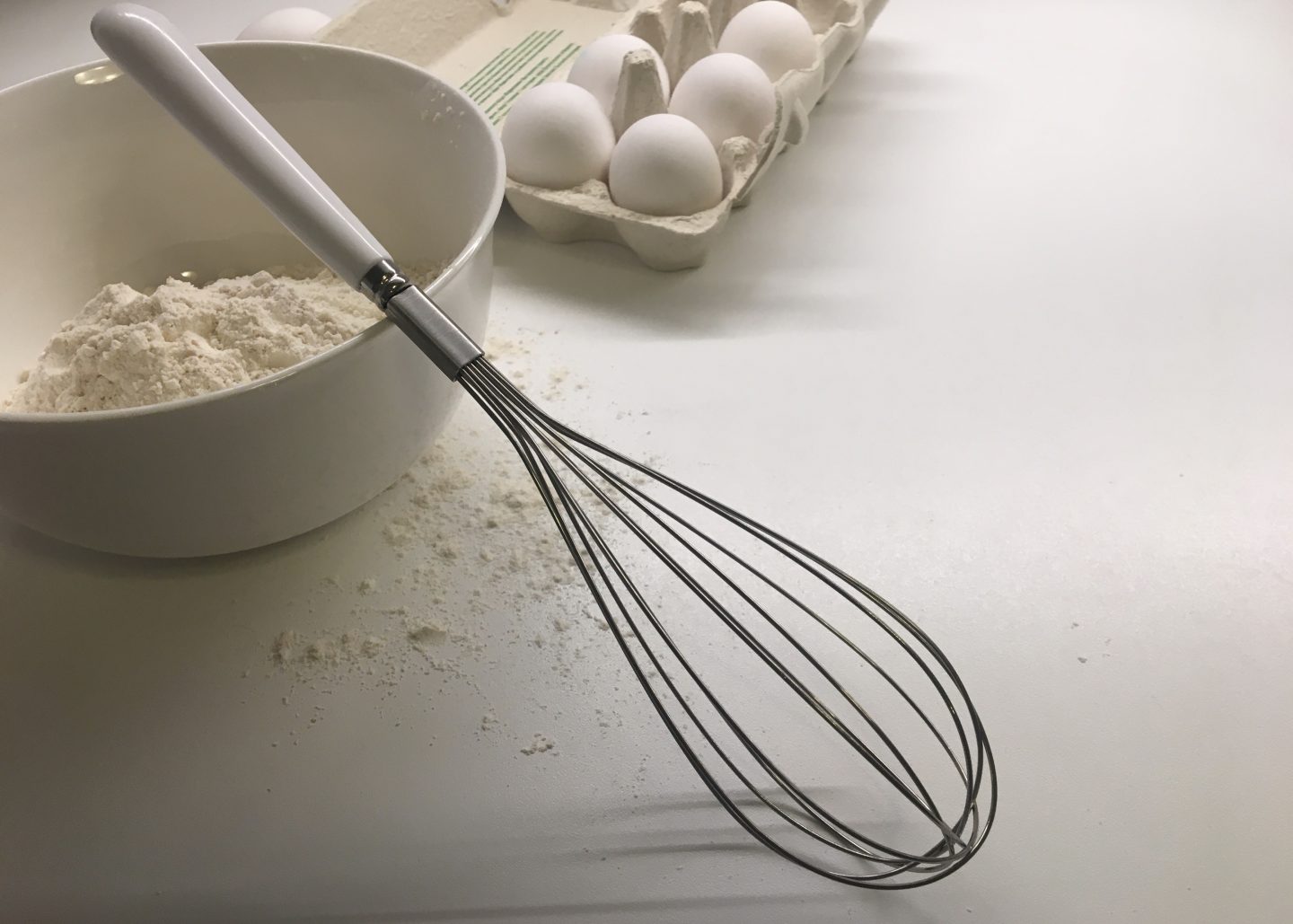Kitchen Whisk

Photo: Maria Panathymou
My schoolteachers would not be proud of me if they found out that I have dedicated an article to a whisk. Soviet schools taught us to strive for high goals and great achievements. ‘Primitive’ interests like food, clothes, and material life in general were never a topic of discussion in decent company. Personal wellbeing, family, and everyday household practices were subordinated to society’s needs and to the future happiness of all people.
Modern Russian culture is also success-oriented. Additionally, and more importantly, the political situation occupies our minds today.
However, today many Russians gravitate towards a simple peaceful life inside their small circles. I feel a little guilty writing this at the moment, but I am one of those people. I get energy from common things like cooking.
The whisk is one of my favorite kitchen devices. I only use it when I have time (and am in the mood) for baking. Unlike other tools, it is not connected with my everyday routine. It is also not associated with high responsibility: for birthdays or other important events I order cakes from bakeries. Instead, the whisk is associated with relaxed Saturday mornings and days off, and with my childhood: pancakes, homemade cookies, simple desserts.
There is no noise and no rush, no strict rules and instructions, as with electric devices. Total freedom! The whisk is easy to use, it weighs nothing, there are no dangerous sharp elements. And it is a beautiful object. Its shape resembles a flower: In fact, the Russian word venchik (whisk) also means ‘flower corolla’, from venets (crown).
My children love to help with baking. We talk while we cook, we watch how raw ingredients slowly transform into something nice. The texture of dough sometimes triggers ASMR-like sensations in me. I like the anticipation of fresh pie scent around the house and how butter will melt on its hot crust. We gather at the table, pour warm drinks and the pie disappears in five minutes. What could be better on a dark winter day in Moscow?
For me, an old-fashioned hand whisk signifies: a break from bustle and stress, the luxury of having free time, stability during turbulent years and, above all, a sense of home. Perhaps these are the things that we should put first, because they give us strength for more public-facing achievements.
Semioticians’ stories: Josh Glenn on MONKEY WHIMSEY | Malcolm Evans on QUEEN MARY FOB |Lucia Laurent-Neva (England) on TEAL BLUE VOYAGER | Rachel Lawes (England) on DEVIL GREEN | Charles Leech (Canada) on STORMTROOPER WHITE | Ramona Lyons on RABBIT BOX | Matthew De Abaitua on HATCHET | Chris Arning on INKSTONE BROOM | Hamsini Shivakumar on SOUL MOTHER SAREES | Lucia Laurent-Neva on SPONGEBOB BUS | Samuel Grange on SALT & PEPPER HOLDER | Ximena Tobi on VASALISA | Luca Marchetti on TEAPOT | Charles Leech on ORNAMENT | Brian McIntyre on BONE & FLINT NECKLACE | Gabriela Pedranti on MAFALDA DOLL | Sarah Johnson on JOAN OF ARC FIGURINE | Vijay Parthasarathy on BINGO | Aiyana Gunjan on WEDDING DUCKS | Serdar Paktin on NEY | Paulina Goch-Kenawy on VASE | Daria Arkhipova on POKER CHIP | Iván Islas on THERMOS | Sónia Marques on CABBAGE TUREEN | Thierry Mortier on BICYCLE BELL | Louise Jolly on CHALICES | Wei Fen Lee on CURRY PUFF POT | Mariane Cara on MINI WINDSOCK | Malex Salamanques Amiel on MARIA LIONZA | Seema Khanwalkar on THANJAVUR DOLL | Maria Papanthymou on KITCHEN WHISK | Martha Arango on ST. ANTHONY OF PADUA | Max Matus on WOODEN ROBOT | Rasika Batra on PRAYER BEADS | Anastasia Kārkliņa on CHESTNUTS | Maciej Biedziński on HAUNTED SPOON | Shirsha Ganguly on TINTIN FIGURINE | Clio Meurer on GLOW-IN-THE-DARK ROSARY | Enya Autumn Trenholm-Jensen on PINKY RING.
Also see these series: COVID CODES | SEMIO OBJECTS | MAKING SENSE | COLOR CODEX

